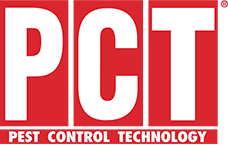AUBURN UNIVERSITY, Ala. – Termite swarms are inevitable every year. According to experts, the start of this season came later than expected. Understanding environmental factors that can trigger termite swarms can save you time and money.
Spring is usually peak season for termite swarms. However, it can happen at any time of the year if the environmental conditions are right.
“A termite swarm is defined as the initial first flight of the winged adults,” said entomologist Xing Ping Hu of the Alabama Cooperative Extension System. “These insects disperse to find mates and new nesting sites and establish new colonies. This process is quick and when it happens to you at home it is an unforgettable experience.”
This explosive spread of termites does not ignite by accident. They also don’t move synchronously through Alabama. Certain environmental conditions will cause winged termites to fly out of their underground nests.
Swarming termites will not harm you, nor will they damage homes or belongings. Most insects die from environmental conditions or predators such as birds, spiders, or other insects.
“The presence of termite swarms is undoubtedly uncomfortable,” Hu said. “It is extremely important that a consumer recognizes that all swarm survivors have the potential to form new colonies and infest homes and other property.”
Research shows that in Alabama, the peak months of swarming are April through July. Scientific observations show that termites need certain units of heat before they swarm. This measurement correlates with regional climate differences across the United States.
Once the insects have reached the required number of heat units, a swarm does not automatically occur. So winged adults wait for the trigger of a rain event. After a precipitation event, swarming usually occurs within one to three warm and windless days.
“Homeowners should watch out for rain events with the expectation that there could be swarms in the next few days,” Hu said.
Hu says when termites are swarming around the outside of a home, an inspection is necessary. Locating the source of the swarm is key to diagnosing a termite problem.
Common colony locations can be tree stumps, tree trunks, or even your home. If termites are already swarming in a house, there is most likely an existing infestation. Contact termite specialists to conduct an inspection.
Here are some tips if termites are in your home:
- Lock down the room where the insects are swarming
- Gather some termites to show your professional inspector
- Use a vacuum to remove insects after they have swarmed
- If possible, note the exact locations where the hawk moths appear
- Professionals use termite control chemicals most effectively
For more information about termites and how to protect your home, visit the Alabama Extension website at www.aces.edu.








